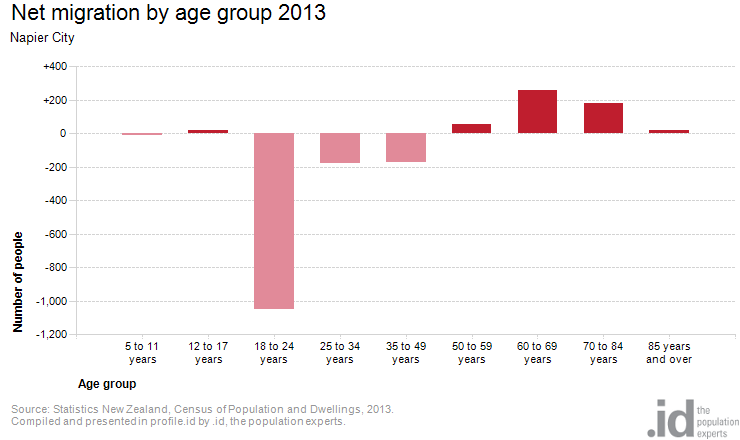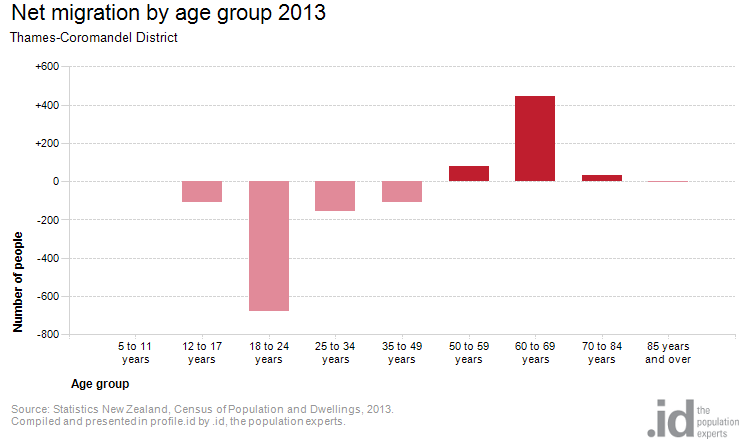While births and deaths have an influence on local population characteristics, migration is by far the most powerful force in population change. A while ago I wrote a blog investigating internal migration, noting that New Zealand is notable for high levels of internal migration.
The patterns of movement reveal that tertiary-age and young adults are the most mobile age cohorts. Teenagers leave the family home for university or to get away from Mum and Dad.
Young adults and families move for economic reasons – in search of better job opportunities. In rural or non-metropolitan centres the pattern is particularly distinct.
Napier and Thames Coromandel (featured below) are classic examples of high net migration losses in the tertiary and young adult cohorts.


The movement of young people to metropolitan centres is nothing new. However, what can be overlooked is the effect of age-specific migration on a population that is already manifesting ageing characteristics due to extended life expectancy, lower fertility levels and the proportion of baby boomers in the age structure entering retirement years.
For areas like Napier and Thames Coromandel, attractive because of climate, natural and recreational attractions, structural population ageing is also escalating through retirement migration.
The combined effect of an ageing population, outward migration by younger cohorts and inward migration by older cohorts cannot be underestimated.
From an economic point of view there is empirical evidence that population ageing reduces regional competitiveness, but it also re-shapes the economy of a place. Nationally we are already seeing a significant swing in industry makeup, away from the primary sector and manufacturing and toward health care and social assistance. In places like Napier and to a greater extent Thames Coromandel, the local workforce may be stretched to support the service requirements of a burgeoning aged population. Essentially, there will be more aged people requiring support for longer periods of time, from a shrinking workforce.
I will leave you with a comment from Waikato University’s Jacques Poot that captures the challenges of non-metropolitan New Zealand, and Australia for that matter:
… it is unlikely that immigration will provide the solution to population decline in all regions that currently face rapid ageing and net outward migration. While a managed contraction of activity is politically not as attractive to sell to constituents as a growth strategy, the “mindset” for policy formulation may need to move away from the “importance in numbers” and there is no doubt that some regions cannot avoid planning for decline … The main concern will be to generate productivity growth and real income gains in these situations, while using the available resources in a sustainable way.













